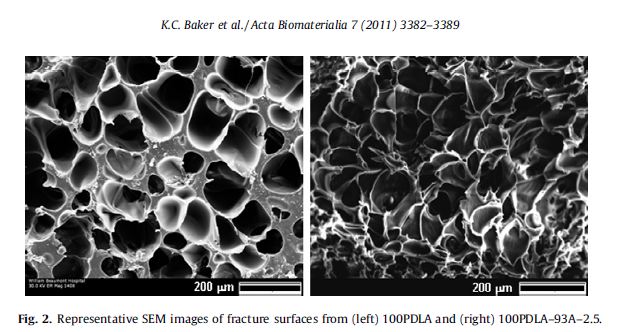Technology Summary: A novel polymer nanocomposites has been developed as a potential alternative to autografts and allografts in orthopedic procedures requiring bone grafting. Supercritical CO2 processing of resorbable polymer/nano-clay mixtures results in the formation of porous nanocomposite constructs which exhibit biocompatibility and significant improvements in mechanical properties (2.5-fold increase in compressive strength compared with pure polymer constructs). Improvements in the mechanical properties of the constructs are related to the dispersion of nano-clay within the polymer matrix and a subsequent reduction in polymer chain mobility.
Advantages:
• Biocompatible porous morphology to act as scaffold
• Improved mechanical properties – can withstand biomechanical loading in the body
• Biodegradable – resorbs predictably without side effects
Stage of Development: Pre-Clinical
• In vitro cultured human osteoblasts – established biocompatibility, no toxicity, positive cellular infiltration, calcium phosphate deposit.

Patent Status: Patents Pending
• 13/010,513 “Supercritical Carbon-Dioxide Processed Biodegradable Polymer Nanocomposites”
References:
• 2011 “Supercritical carbon dioxide processed resorbable polymer nanocomposite bone graft substitutes” Baker et. al. ACTA Biomaterialia 7 pp 3382-3389
• 2010 “Investigation of Clay Modifier Effects on the Structure and Rheology of Supercritical Carbon Dioxide-Processed Polymer Nanocomposites” Bellair et al. Journal of Polymer Science Part B : Polymer Physics 48, p823-831